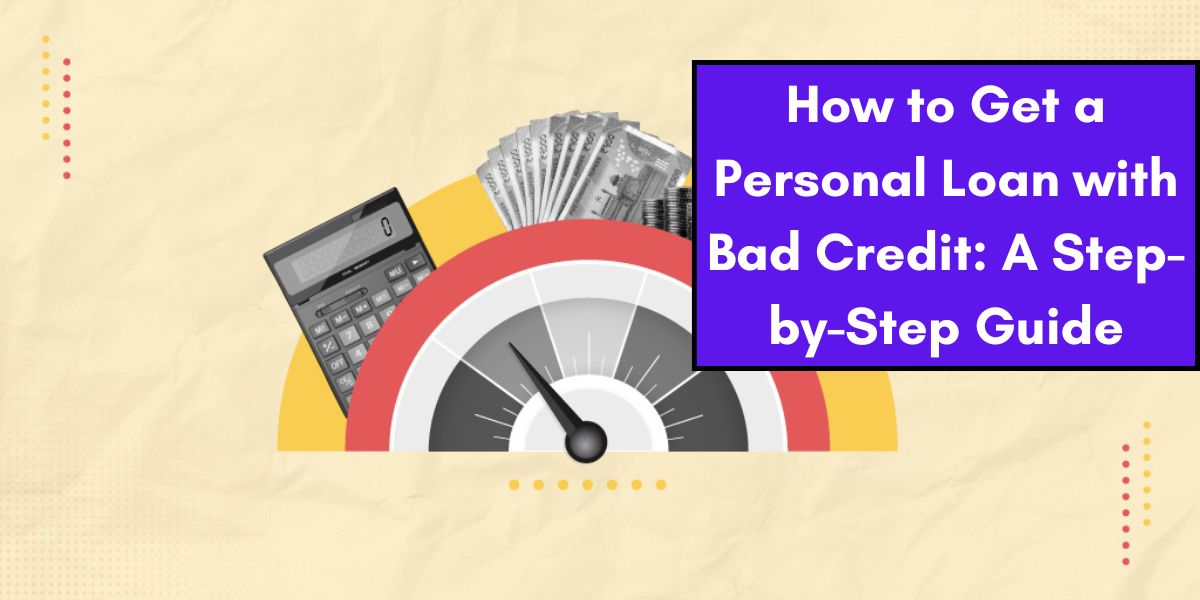Having bad credit can make it more challenging to secure a personal loan, but it’s not impossible. Many lenders offer loans specifically designed for borrowers with low credit scores. However, these loans often come with higher interest rates and stricter terms. This guide will walk you through the steps to improve your chances of getting a personal loan, even with bad credit.
Step 1: Check Your Credit Score and Report
Before applying for a loan, review your credit score and credit report to understand where you stand. You can check your credit score for free through financial apps or credit bureaus.
- A bad credit score is generally considered below 580 (FICO Score).
- Look for errors on your credit report—disputing inaccuracies can improve your score.
- Knowing your score helps you identify lenders willing to work with low-credit borrowers.
Step 2: Understand Your Loan Options
There are several types of personal loans available, even for those with bad credit:
1. Online Lenders
Many online lenders specialize in bad credit loans and offer prequalification with a soft credit check. Interest rates may be higher, but they’re often more flexible than banks.
2. Credit Unions
Credit unions tend to offer lower interest rates and more lenient approval requirements for members, even if you have bad credit.
3. Secured Personal Loans
These loans require collateral (like a car, savings account, or valuable asset). Since the lender has security, you may get a lower interest rate even with bad credit.
4. Payday & No-Credit-Check Loans (Use Caution!)
Some lenders offer payday loans or no-credit-check loans, but they come with extremely high interest rates (sometimes 300%+ APR) and short repayment terms. These should only be a last resort.
Step 3: Compare Lenders and Prequalify
Not all lenders have the same terms for bad credit borrowers. When comparing lenders, consider:
- Interest rates (APR) – Lower is better, but expect higher rates with bad credit.
- Loan amounts – Some lenders offer smaller loan amounts ($500–$10,000).
- Repayment terms – Look for manageable repayment periods (12–60 months).
- Fees – Check for origination fees, late payment fees, or prepayment penalties.
- Prequalification – Many lenders offer soft credit checks to see if you qualify without hurting your score.
Websites like LendingTree, NerdWallet, and Credit Karma can help you compare offers from multiple lenders.
Step 4: Consider a Co-Signer or Joint Loan
If your credit is too low to qualify for a loan, adding a co-signer with good credit can improve your chances. A co-signer agrees to repay the loan if you can’t, making lenders more willing to approve you.
Alternatively, some lenders offer joint personal loans, where two people share responsibility for the payments.
Step 5: Gather Required Documents
To apply for a personal loan, you’ll need:
- Proof of income (pay stubs, tax returns, or bank statements)
- Proof of identity (driver’s license, passport, or Social Security number)
- Proof of residence (utility bill, lease agreement)
- Employment verification (especially if you’re self-employed)
Having these documents ready speeds up the approval process.
Step 6: Apply for the Loan
Once you’ve chosen a lender, complete the application online or in person. Be prepared for:
- A hard credit check, which may temporarily lower your credit score.
- An offer that includes the loan amount, interest rate, repayment terms, and fees.
- A decision within a few hours to a few days, depending on the lender.
If approved, review the loan agreement carefully before signing to avoid hidden fees or unfavorable terms.
Step 7: Improve Your Chances of Approval
If you’re struggling to get approved, consider these strategies:
- Increase your income – A higher income makes you a more attractive borrower.
- Reduce your debt-to-income (DTI) ratio – Pay down existing debt before applying.
- Make a larger down payment – If it’s a secured loan, offering a higher-value asset helps.
- Build your credit – Pay bills on time, reduce credit card balances, and consider a credit-builder loan.
Getting a personal loan with bad credit is possible, but it requires research and careful consideration. By checking your credit, comparing lenders, exploring secured options, and improving your financial profile, you can increase your chances of securing a fair loan.
FAQs About Getting a Personal Loan with Bad Credit
Can I get a personal loan with a credit score of 500?
Yes, but your options will be limited. You may need to consider secured loans, credit unions, or online lenders specializing in bad credit loans. Expect higher interest rates.
How much can I borrow with bad credit?
Loan amounts typically range from $500 to $10,000, depending on the lender and your financial situation.
Do bad credit personal loans require a credit check?
Most lenders perform a credit check, but some offer no-credit-check loans with very high interest rates.
What is considered a bad credit score?
A FICO score below 580 is generally considered bad credit.

